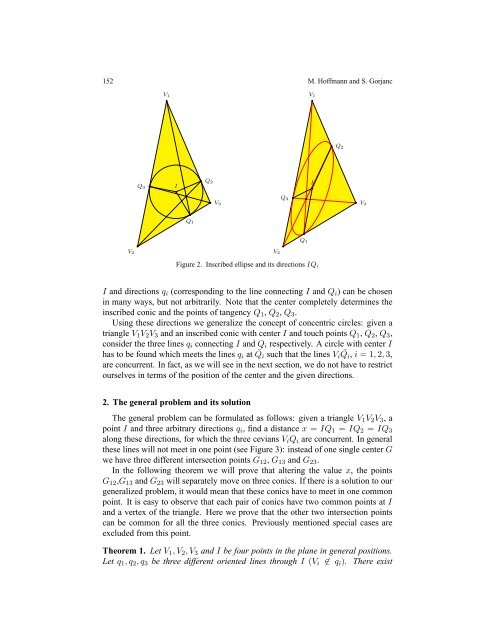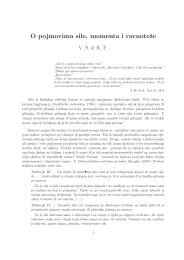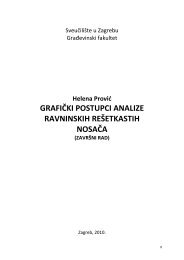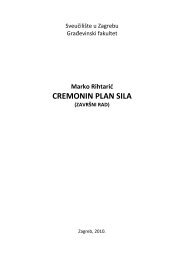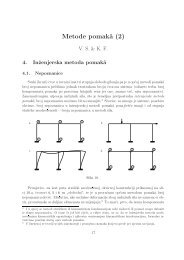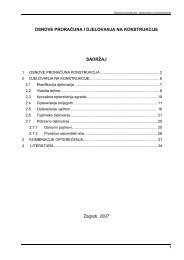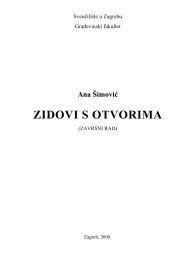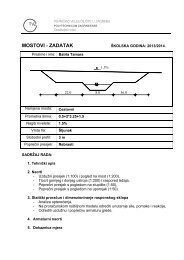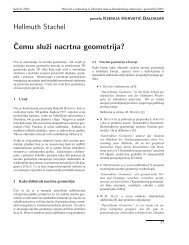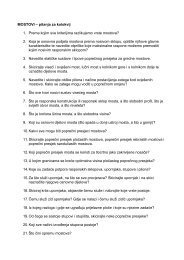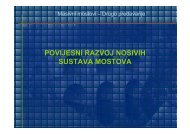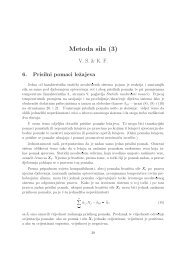On the Generalized Gergonne Point and Beyond - Forum ...
On the Generalized Gergonne Point and Beyond - Forum ...
On the Generalized Gergonne Point and Beyond - Forum ...
You also want an ePaper? Increase the reach of your titles
YUMPU automatically turns print PDFs into web optimized ePapers that Google loves.
152 M. Hoffmann <strong>and</strong> S. Gorjanc<br />
V 1<br />
V 1<br />
Q 2<br />
Q 2<br />
I<br />
Q 3 I<br />
Q 3<br />
V 3<br />
Q 1<br />
Q 1<br />
V 2<br />
V 2<br />
V 3<br />
Figure 2. Inscribed ellipse <strong>and</strong> its directions IQ i<br />
I <strong>and</strong> directions q i (corresponding to <strong>the</strong> line connecting I <strong>and</strong> Q i ) can be chosen<br />
in many ways, but not arbitrarily. Note that <strong>the</strong> center completely determines <strong>the</strong><br />
inscribed conic <strong>and</strong> <strong>the</strong> points of tangency Q 1 , Q 2 , Q 3 .<br />
Using <strong>the</strong>se directions we generalize <strong>the</strong> concept of concentric circles: given a<br />
triangle V 1 V 2 V 3 <strong>and</strong> an inscribed conic with center I <strong>and</strong> touch points Q 1 , Q 2 , Q 3 ,<br />
consider <strong>the</strong> three lines q i connecting I <strong>and</strong> Q i respectively. A circle with center I<br />
has to be found which meets <strong>the</strong> lines q i at ¯Q i such that <strong>the</strong> lines V i ¯Qi , i = 1,2,3,<br />
are concurrent. In fact, as we will see in <strong>the</strong> next section, we do not have to restrict<br />
ourselves in terms of <strong>the</strong> position of <strong>the</strong> center <strong>and</strong> <strong>the</strong> given directions.<br />
2. The general problem <strong>and</strong> its solution<br />
The general problem can be formulated as follows: given a triangle V 1 V 2 V 3 , a<br />
point I <strong>and</strong> three arbitrary directions q i , find a distance x = IQ 1 = IQ 2 = IQ 3<br />
along <strong>the</strong>se directions, for which <strong>the</strong> three cevians V i Q i are concurrent. In general<br />
<strong>the</strong>se lines will not meet in one point (see Figure 3): instead of one single center G<br />
we have three different intersection points G 12 , G 13 <strong>and</strong> G 23 .<br />
In <strong>the</strong> following <strong>the</strong>orem we will prove that altering <strong>the</strong> value x, <strong>the</strong> points<br />
G 12 ,G 13 <strong>and</strong> G 23 will separately move on three conics. If <strong>the</strong>re is a solution to our<br />
generalized problem, it would mean that <strong>the</strong>se conics have to meet in one common<br />
point. It is easy to observe that each pair of conics have two common points at I<br />
<strong>and</strong> a vertex of <strong>the</strong> triangle. Here we prove that <strong>the</strong> o<strong>the</strong>r two intersection points<br />
can be common for all <strong>the</strong> three conics. Previously mentioned special cases are<br />
excluded from this point.<br />
Theorem 1. Let V 1 ,V 2 ,V 3 <strong>and</strong> I be four points in <strong>the</strong> plane in general positions.<br />
Let q 1 ,q 2 ,q 3 be three different oriented lines through I (V i ∉ q i ). There exist


